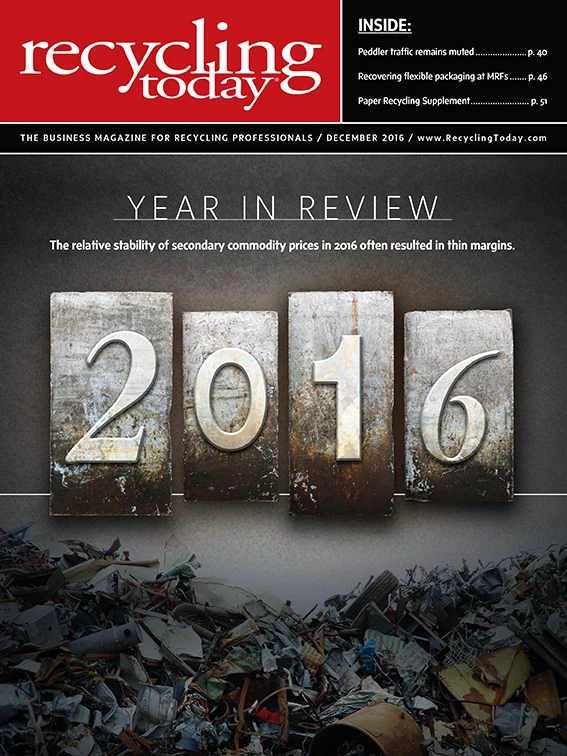Moving into the end of the year, nonferrous metals are seeing upward momentum. After several years of bearish conditions, indicators are displaying bullishness.
Initially, while there was trepidation regarding the impact of a Donald J. Trump presidency on commodities markets, since the election in early November, many nonferrous metals have seen increases in price. Speculation is that Trump’s call for massive investment in infrastructure spending has set the tone, with copper being one of the biggest beneficiaries. The metal had climbed by nearly $1,000 per ton in a week’s time in early November, though it has since given back some of those gains. That increase was the sharpest seen in nearly a decade.
While copper prices may back off a bit more in the near term, a number of more substantive reasons for optimism point to copper markets strengthening through 2017.

One such reason is the possible strengthening of China’s economy after several quarters of uncertainty over the relative health of the Chinese economy.
In a monthly market analysis, Germany-based Aurubis, the largest copper recycler in the world, notes the positive trend in the nonferrous metals sector, despite the uncertain political and macroeconomic environment. For instance, Aurubis says real copper demand in China may be better than many have estimated. Cathode imports were at 2.8 million metric tons over the first 10 months of 2016, a 9.7 percent increase compared with the same period of the previous year.
Supporting Aurubis’ comments is a report by the London-based International Wrought Copper Council, which states that there could be more upside demand potential for copper in China in 2017.
Aluminum also has benefited from a combination of factors. One key driver has been the growing scrutiny by U.S. regulatory agencies, including the Commerce Department, which are more aggressively looking to crack down on the “alleged dumping” of aluminum on the North America market, most notably by Chinese interests.
According to several reports, the U.S. Commerce Department, in a preliminary finding, says certain aluminum exports by China Zhongwang Holdings Ltd. to the U.S. circumvented antidumping restrictions imposed on the company in 2010.
While the fundamentals for aluminum look promising, North American demand for the metal remains challenged. The most recent reports find aluminum orders in the United States down nearly 11 percent from September to October.
According to the U.S. Geological Survey (USGS), the domestic aluminum industry purchased an estimated 781 million pounds of aluminum scrap during August 2016, a 5 percent increase from last August’s total of 744 million pounds.
The USGS points out that over the first eight months of 2016, preliminary data indicate that the recovery of aluminum from scrap totaled 5.20 billion pounds, a 3.5 percent increase from 2015’s eight-month total of 5.03 billion pounds.
Meanwhile, exports of aluminum scrap declined by roughly 15 percent to 1.96 billion pounds. The drop was partly driven by the strong U.S. dollar, which made it more expensive to ship material offshore.

Explore the December 2016 Issue
Check out more from this issue and find your next story to read.
Latest from Recycling Today
- BMW Group, Encory launch 'direct recycling’ of batteries
- Loom Carbon, RTI International partner to scale textile recycling technology
- Goodwill Industries of West Michigan, American Glass Mosaics partner to divert glass from landfill
- CARI forms federal advocacy partnership
- Monthly packaging papers shipments down in November
- STEEL Act aims to enhance trade enforcement to prevent dumping of steel in the US
- San Francisco schools introduce compostable lunch trays
- Aduro graduates from Shell GameChanger program





